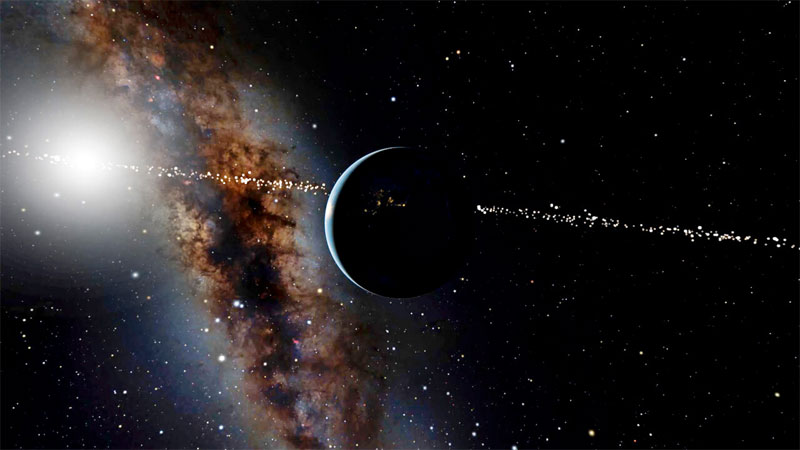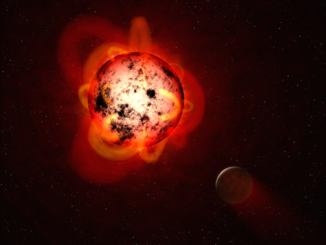
One of the most productive ways to find exoplanets is to look for a dip in brightness when a planet crosses in front of its star as viewed from Earth. It might soon be possible to detect the presence of extraterrestrial life by analysing the starlight that has passed through a planet’s atmosphere during such a transit.
Might alien astronomers be in a position to do the same thing in reverse, either in the past, present or future?
Lisa Kaltenegger, professor of astronomy and director of Cornell University’s Carl Sagan Institute, and Jackie Faherty, an astrophysicist at the American Museum of Natural History, scoured stellar motion and position data collected by the European Space Agency’s Gaia spacecraft to identify stars that are, have been or will be roughly aligned with the plane of our solar system, allowing transits to be seen.
They found 1,715 star systems within 326 light years that could have spotted Earth over the past 5,000 years using the transit method and another 319 that will move into the proper orientation over the next 5,000 years.
“From the exoplanets’ point-of-view, we are the aliens,” Kaltenegger said. “We wanted to know which stars have the right vantage point to see Earth, as it blocks the Sun’s light. And because stars move in our dynamic cosmos, this vantage point is gained and lost.”
Faherty said the precise Gaia data allowed the researchers “to look backward and forward in time, and to see where stars had been located and where they are going.”
“One might imagine that there are worlds beyond Earth that have already detected us and are wondering if they are alone in the cosmos,” Faherty said. “This catalog is an intriguing thought experiment for which one of our neighbors might be able to find and study Earth.”
Of the 2,034 star systems passing through the “Earth transit zone” over a 10,000-year period, seven are known to host exoplanets. One hundred and seventeen are within 100 light years and 75 have been in position to detect Earth since commercial radio began a century ago.
“Our analysis shows that even the closest stars generally spend more than 1,000 years at a vantage point where they can see Earth transit,” Kaltenegger said. “If we assume the reverse to be true, that provides a healthy timeline for nominal civilisations to identify Earth as an interesting planet.”



